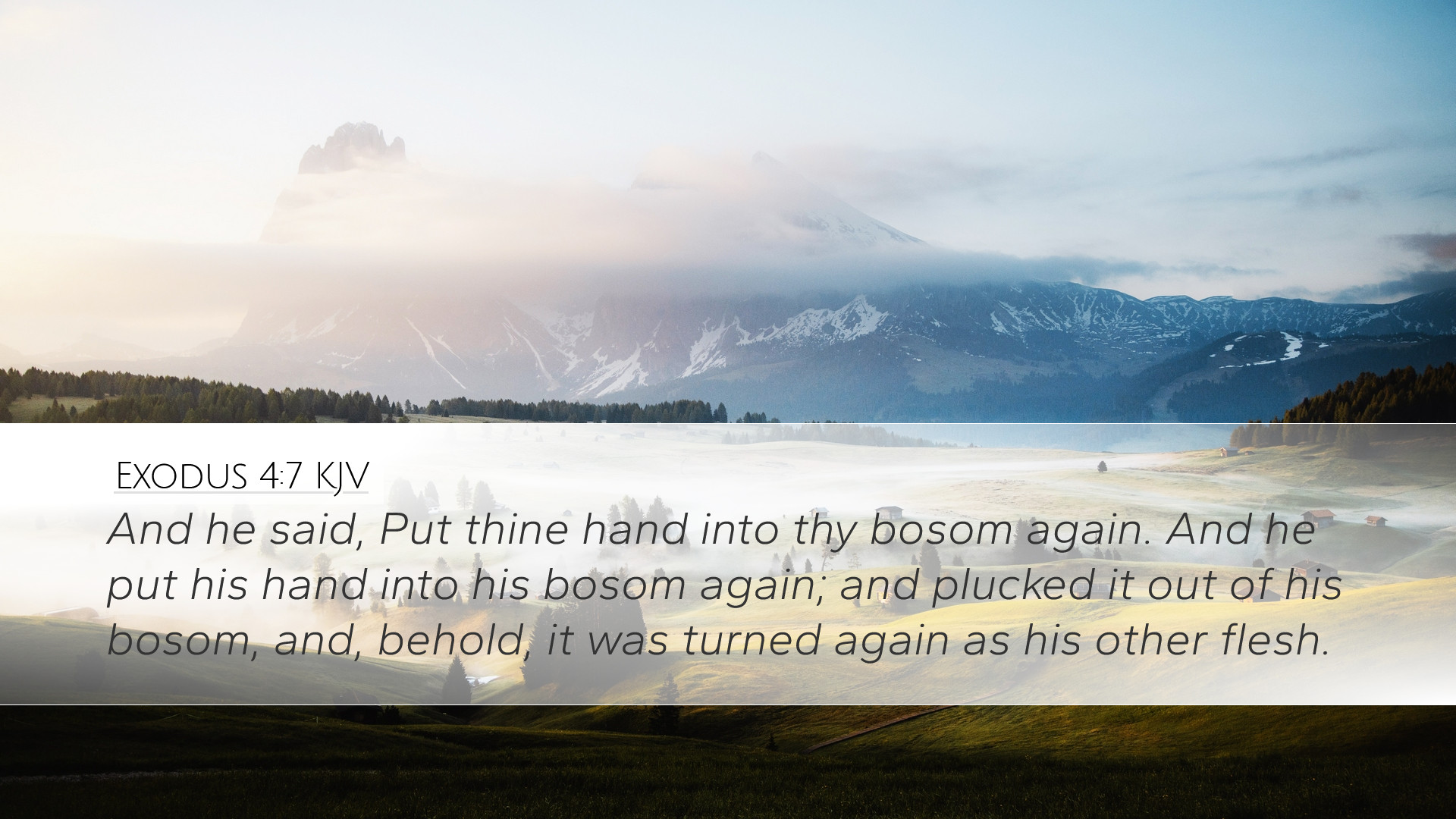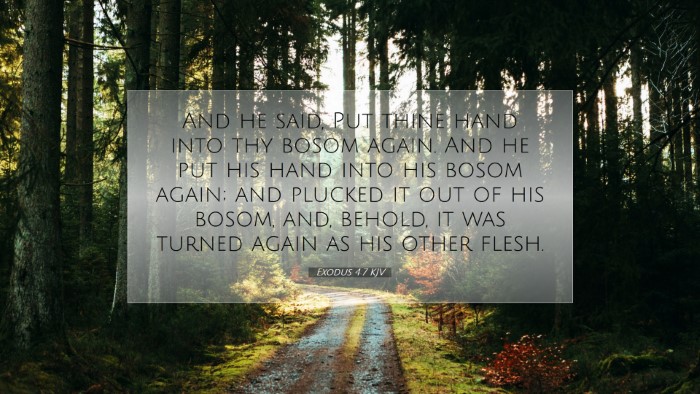Exodus 4:7 Commentary
Verse Context: Exodus 4:7 states, “And he said, 'Put your hand inside your cloak.' And when he took it out, behold, his hand was leprous, like snow.” This verse takes place in the context of God's call to Moses at the burning bush, where God reassures Moses of His presence and power for the mission ahead.
Insights from Public Domain Commentaries
1. Matthew Henry's Commentary
Matthew Henry emphasizes the significance of this miraculous sign as a demonstration of God's power. He notes that God uses this experience to highlight not only Moses' doubts but also the assurance that God provides the means to validate His calling.
Henry explains that the leprous hand represents the state of humanity outside of God's grace, illustrating how human beings, when faced with divine calling, may feel unworthy. However, it is through God’s intervention that what is deemed impure may be restored. His commentary implies that the miracles are both a sign to the Egyptians and a teaching moment for Moses, showcasing God's ability to transform and purify.
2. Albert Barnes' Notes
Albert Barnes offers an insightful interpretation concerning the symbolism of Moses’ hand being turned leprous. He suggests that this was a sign reflecting the power of God over natural conditions. Barnes discusses that the transformation into leprosy serves as a critical turning point, challenging Moses' fears and reluctance.
He also points out that the act of putting the hand back into the cloak and retrieving it restored emphasizes God's power to heal and cleanse what is deemed unclean. This narrative serves not just as a sign of authenticity for Moses but also reveals God's compassion and readiness to restore humanity.
3. Adam Clarke's Commentary
Adam Clarke delves into the details of the physical phenomena of leprosy, encouraging readers to understand the severity this affliction had within the context of the Hebrew community. Clarke highlights the humiliation associated with leprosy and how Moses could relate to the affliction of his people during their oppression in Egypt.
Clarke interprets the leprous hand as representative of the Israelites' condition—unclean, cast off, and in need of redemption. He further elaborates that God’s capability to turn leprosy into restoration serves not only to equip Moses for his leadership role but also as a message of hope to the suffering Hebrew people.
Theological Implications
The portrayal of God's signs through Moses conveys theological depth, particularly regarding divine authority and grace. The transition from affliction to healing is a profound metaphor for the transformative work of God in the believer’s life.
- Human Infirmity: The leprous hand symbolizes human frailty and the reality of sin.
- Divine Restoration: The quick restoration of Moses’ hand mirrors God's ability to heal and rejuvenate the soul.
- Sign of Authority: This miraculous sign lends credibility to Moses' mission, underscoring God's commission.
Application for Pastors and Theologians
For pastors, Exodus 4:7 is a reminder of the power of God in calling His servants. It encourages church leaders to trust in God's ability to equip them for ministry despite their shortcomings. God's provision signifies that they can step into their roles with the confidence that He is at work within them.
Theologians will find value in exploring the layers of narrative driven by God's intervention in the lives of individuals. The act of performing signs and wonders showcases God's sovereignty to the Israelite community and serves as a pivotal point in the greater Exodus narrative.
Conclusion
In conclusion, Exodus 4:7 speaks volumes about divine calling, human weakness, and God's restorative power. By examining the insights of respected commentators such as Matthew Henry, Albert Barnes, and Adam Clarke, we are drawn into a deeper understanding of how God's signs serve to bolster faith and transform lives. This narrative encourages believers to embrace their imperfections while relying on the assured strength of God.


